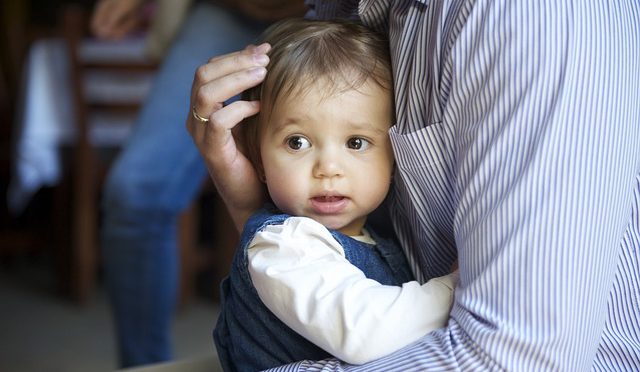Separation can be sad for children at different ages and with different temperaments, and is often quite difficult for parents– sometimes more so for the parents than the kids!
Art Yuen is the KnowledgeBase Coordinator for Attachment Parenting International (API), a member of API’s Board of Directors, and an API Leader with API-NYC in New York City, USA, where she lives with her 2 children and husband.
Generally it’s healthier to say a clear goodbye so that children are able to work through their feelings and move on into healthy play and engagement without being disrupted by vigilance for the
missing parent. Predictability and certainty, even if sad — with
support to move through it — is healthier than constant vigilance and anxiety that soak up energy better spent learning, exploring, and engaging with another loving caregiver.
The goodbye goal is less about wanting your child to not cry when you say goodbye and mostly about building predictable, warm, comfortable family skills around age-appropriate ways to work through tough, upsetting situations and big feelings.
That said, there are several situations that can affect your child’s comfort with separations, including:
- Developmental stage
- Temperament
- Parental stress or anxiety
- Past negative separation experiences
- Prior experience being away from the parent
- Recent change in routine
- Pending, active, or recovering illness
- Inexperience with the caregiver and/or past negative experience with a caregiver
- Comfort with goodbye routine.
Here are 6 tips for separating from your child in a healthy way:
- Talk about the routine of you leaving, then work on a comfortable goodbye routine. This can go a long way to help regular separation feel predictable and comfortable, even if there is sadness. Including the caregiver during the separation in this conversation helps everyone involved get on the same page.
- Acknowledge feelings, yours and your child’s. Say out loud that the feelings involved, even if strong and upsetting, are OK and are normal.
- Talk about what you do when you feel sad and are missing your child. Do you look at his picture or a special object?
- Assist your child in processing his difficult emotions. Here are 3 ideas to try:
- Stories about what you did when you were the same age or in the same situation. Don’t be surprised if you get multiple requests for the story. There are also books that help with processing emotions that your child may love to have you read as well.
- Drawings about hard situations.
- Doll or toy play where objects are assigned personalities. Allow the child to lead. Parents should play along but without offering explicit correction, though they may offer scenarios. Read Playful Parenting by Lawrence J. Cohen for more information.
- Remind your child of her caregiver, who is there to help her through any upsets in your absence and who will help keep you in mind and look forward to your return.
- Insert reminders of your return into his daily routine. For example, remind him that you’ll see him again after bath time or another activity in his day that registers a fixed time for him. Goodbyes need not be drawn out forever or abrupt. Ending on a “See you soon!” note lends your trust that your child will be OK in the interim.
Keep in mind that nothing you do may produce a happy goodbye until there is more experience to draw on or the current age or developmental stage has passed. Stay in touch with your own
feelings and strive to be as responsive as you can to you and your child in the given situation.

